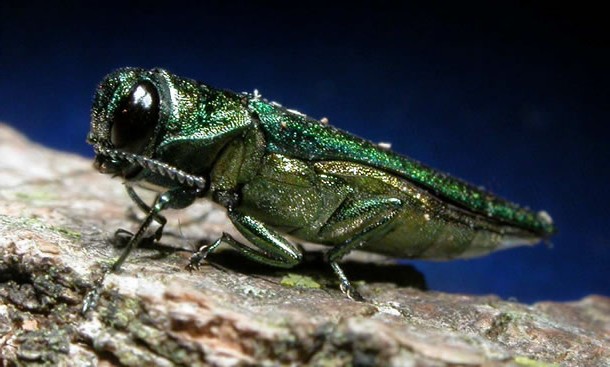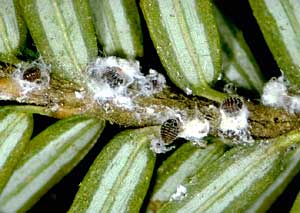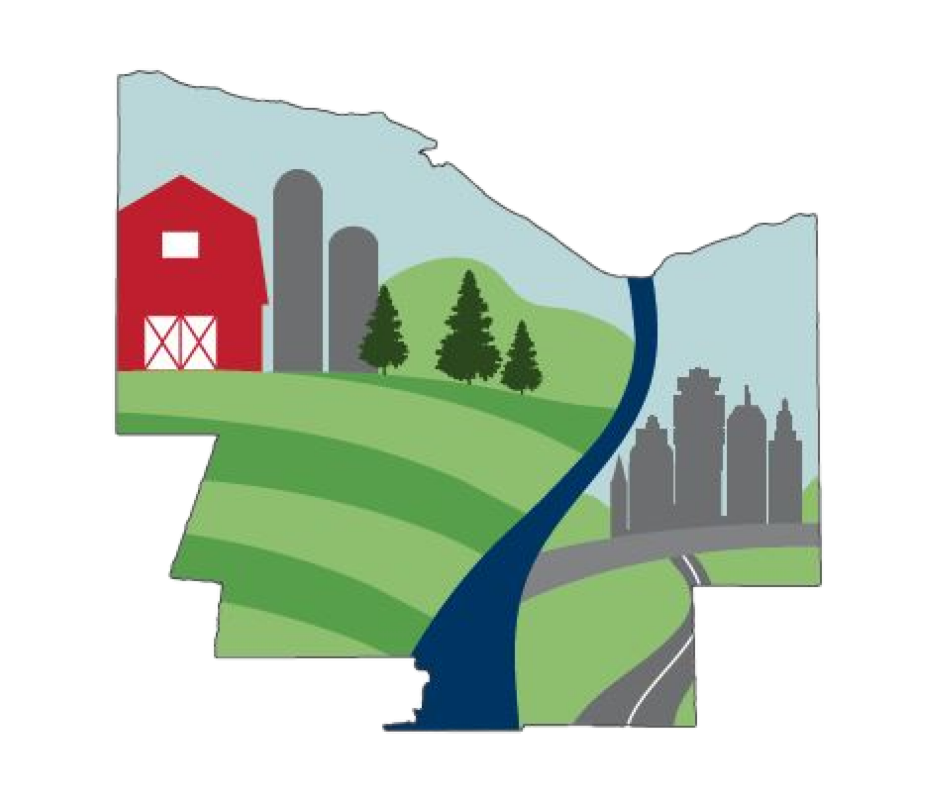Invasive Animals
Emerald Ash Borer (EAB) (Agrilus planipennis)
The emerald ash borer was first discovered in the United States in 2002 in southeastern Michigan This Asian beetle infests and kills North American ash species (green, white, black, and blue ash). The adult beetles are roughly 3/8 to 5/8 inch long and have metallic green wing covers and a coppery red/purple abdomen.
Adult beetles may be present from May-September, but are most common in June and July. Each female lays approximately 30-60 eggs during an average lifespan. The eggs are deposited individually in bark crevices. Once the larvae hatch they chew through the bark and into the phloem and cambial regions of the ash trees. It is this activity that eventually leads to the death of infested trees. The larvae feed on the phloem for several weeks, creating serpentine galleries (S-shaped) which effectively girdle the tree. Unable to transport the nutrients that it requires, the ash tree usually dies within 2 to 4 years of becoming infested.
There are some signs and symptoms that may develop in cases of emerald ash borer infestation. The tree canopy may become increasingly thin as foliage wilts and branches die back. The trunk may exhibit jagged holes left by woodpeckers feeding on the ash borer larvae. Small, “D” shaped exit holes may be observed on the trunk where adult beetles have emerged. And epicormic shoots and branches may sprout on the trunk or branches. Emerald ash borer is a serious threat to North America’s native ash tree populations. If you notice any of these signs/symptoms on an ash tree notify your state Department of Agriculture, State Forester, Cooperative Extension Office, or local Conservation District.
www.dec.ny.gov and search “emerald ash borer”
Call NYS DEC at 1-866-640-0652
Contact your county’s Cornell Cooperative Extension
The MCEABTF has created an informational flyer to help residents identify and assess the risks of EAB in their community. It can be viewed HERE.
Hemlock Woolly Adelgid (HWA) (Adelges tsugae)
The hemlock woody adelgid is a native species of Asia that extracts nutrients from hemlock foliage, preventing the growth of needles, causing needle discoloration, impairing tree health. The infestation is usually fatal after several years. Wind, birds, other wildlife and humans all assist in the spread of the adelgid. During the summer of 2017, the adelgid was discovered in the Town of Lake George. This is the first known occurance of the HWA in the Adirondack Park. Effective management of HWA involves the application of insecticides on the tree around the fall or spring. To find out how you can properly ID Hemlock Woolly Adelgid and report it if noticed click HERE.
Spotted Lanternfly (Lycorma delicatula)
To anyone who enjoys beer, wine, or cider – this should concern you. Spotted lanternfly can feed on over 70 different plant species, including hops, grapes, apple trees, walnut trees, maples, cherries, oaks, and more. It is present in several counties including those in the Finger Lakes and Western NY. It’s distinctive color and size (reaching to about 1″ long) make this a rather easy species to identify. If you think you have seen spotted lanternfly, please contact spottedlanternfly@dec.ny.gov immediately.

Lawrence Barringer, Pennsylvania Department of Agriculture, Bugwood.org licensed under a Creative Commons Attribution 3.0 License.
licensed under a Creative Commons Attribution 3.0 License.
